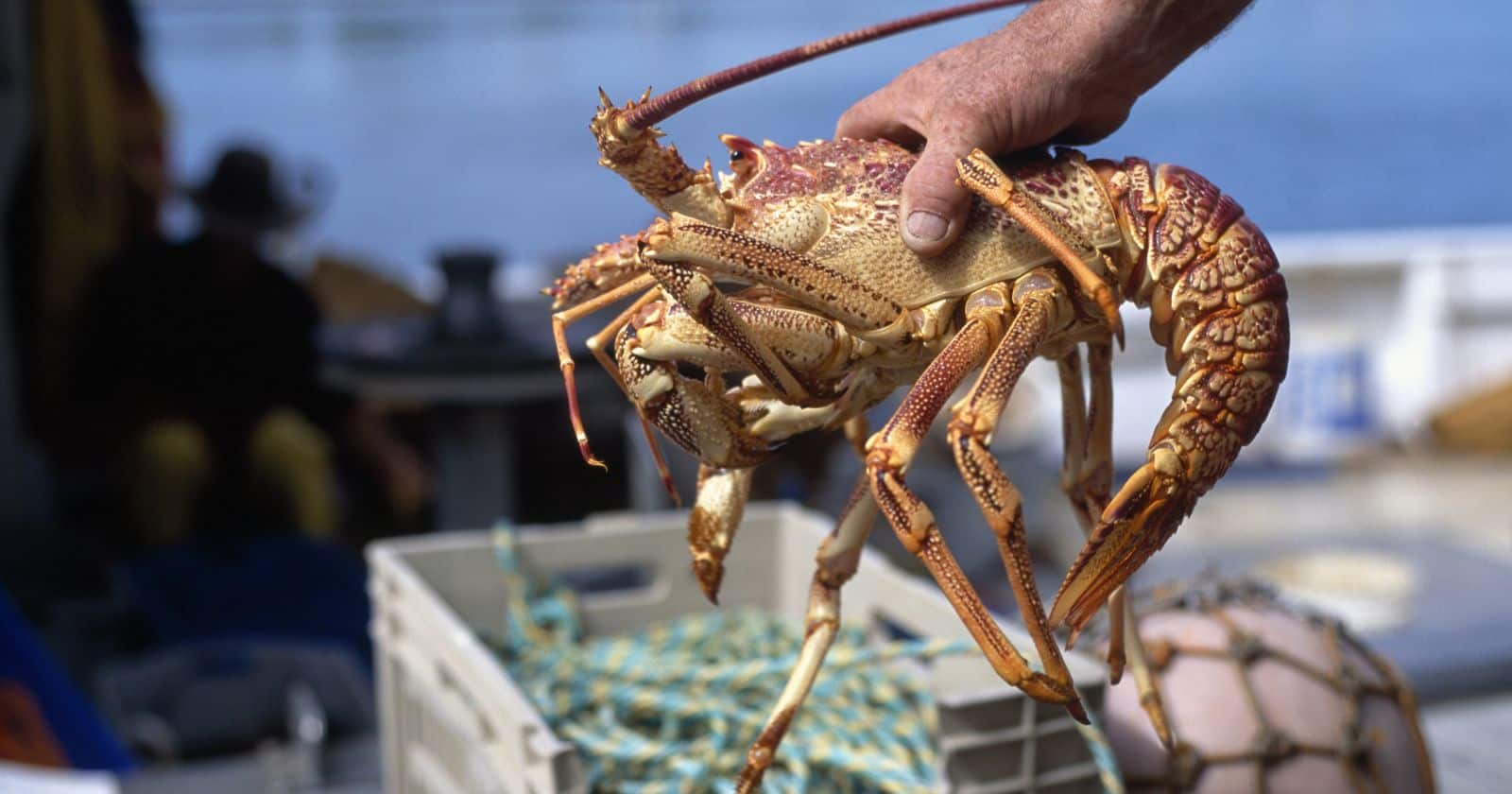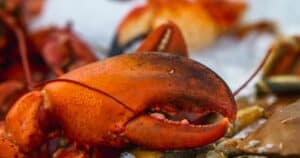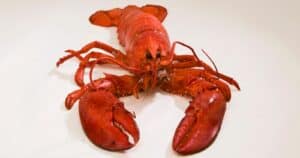Did you know that lobsters can live for a surprisingly long time? Forget everything you thought you knew about these fascinating sea creatures! In this blog post, we will delve into the world of lobsters, exploring their incredible lifespan and shedding light on some lesser-known facts.
Have you ever wondered how old a lobster can actually get? Well, brace yourself for this mind-blowing fact: the oldest lobster ever caught was estimated to be a whopping 140 years old! Imagine the stories it could tell if only lobsters could talk. But that’s not all – some lobsters can live over a century, defying the aging process and leaving us in awe.
Now that you’re hooked (pun intended), let’s delve into the nitty-gritty details. In the next section, we will unravel how lobsters achieve such remarkable longevity, examining their genetic makeup and unique ability to molt and regrow their exoskeleton.
We’ll also explore their growth patterns and how they continually add new muscle cells throughout their lives.
But how can we determine the age of these mysterious creatures? It’s no easy task! We’ll discuss the challenges researchers face when estimating lobster ages, relying on indicators such as size and other variables to make an educated guess.
And brace yourself for another surprising revelation – older lobsters may actually be more fertile than their younger counterparts!
The Astonishing Lifespan of Lobsters: How Long Can They Actually Live?
Lobsters have a relatively long lifespan, with estimates suggesting they can live up to 45 to 50 years in the wild. However, determining their exact age can be challenging. Newer techniques may soon provide more accurate age estimates.
Some lobsters have been found to live even longer than 50 years, with one remarkable female lobster reaching an impressive 72 years old. This longevity can be attributed to their genetic makeup and structure, which allows for continuous growth and molting of their exoskeleton.
Hemisphere, seasonality, water temperature, and the specific type of lobster can also impact their lifespan. Lobsters have a better chance of living longer if they are not caught by lobstermen or affected by environmental factors.
Different types of lobsters also exhibit different survival levels. Canadian lobsters, for example, have been known to live for over 100 years, while American lobsters can live up to 50 years.
Unlocking the Longevity: The Genetic Makeup and Molting Abilities of Lobsters
Lobsters possess unique genetic makeup and molting abilities that contribute to their remarkable longevity. Through a stepwise process of molting, lobsters exhibit indeterminate growth and can reproduce throughout their entire lives, suggesting a negligible senescence.
Despite challenges in monitoring their population structure due to limited genomic resources and weak genetic differentiation resulting from large population size and high dispersal rates, the use of single-nucleotide polymorphism genotyping has revealed regional-scale genetic structure and provided insights into how environmental factors shape lobster populations.
One key aspect of a lobster’s longevity lies in its molting abilities. Throughout its life, a lobster continues to grow and periodically sheds its hard exoskeleton, a process known as molting. After each molt, the lobster adds new muscle, allowing it to increase in size and maintain its growth.
As the lobster molts, its body tissues absorb water, causing it to expand in size. This process of molting and growth is fundamental to a lobster’s longevity and ability to adapt to its environment.
The genetic makeup of lobsters also plays a crucial role in their longevity. Adaptive genetic variation allows for the detection of fine-scale population structure, complementing information obtained from neutral genetic variation.
Understanding the genetic diversity of lobster populations is essential for conserving their longevity and biodiversity. The interplay between the lobster’s genetic makeup, its molting abilities, and environmental factors such as diet and sunlight exposure also contributes to the diversity of lobster colors.
Guessing the Age: Challenges and Indicators for Estimating Lobster Ages
Estimating the age of lobsters can be challenging due to the lack of direct age indicators. This poses a unique problem for biologists, as all lobsters molt and shed their exoskeletons, making it difficult to determine their age. Instead, scientists rely on other variables such as size to estimate the age of lobsters, but this method can be imprecise and unreliable.
However, there are some indicators that show promise in estimating lobster ages. Cuticle bands in the ossicles of the gastric mill, which is part of the lobster’s digestive system, have shown potential as age indicators. The presence of these bands can provide valuable information about the lobster’s age, although more research is needed to refine this method and ensure accuracy.
Newer techniques may also lead to more accurate age estimates for lobsters. Scientists continue to explore different approaches and technologies to improve their ability to estimate lobster ages. These advancements may include genetic analysis, chemical markers, or other innovative methods that can provide more reliable and precise age estimates.
Interestingly, research suggests that lobsters may not experience a decline in physical condition or fertility with age. In fact, older lobsters may be more fertile than younger ones. This finding challenges the common notion that aging is universally associated with deterioration and loss of reproductive capacity. Further studies are needed to better understand the biology and longevity of lobsters.
Fertile at Old Age: Surprising Abilities of Older Lobsters
Lobsters are truly fascinating creatures, and as they age, they possess some remarkable abilities that may surprise you. Contrary to the common belief that fertility declines with age, lobsters actually become more fertile as they grow older. This increased fertility is a result of various factors that contribute to their longevity and reproductive success.
One key factor that affects the fertility of older lobsters is the enzyme known as telomerase. Telomerase plays a crucial role in maintaining the length of telomeres, which are protective caps at the end of chromosomes.
Research suggests that lobsters have the unique ability to express telomerase in most of their tissues as adults. This expression of telomerase is believed to be closely related to their longevity and fertility, allowing them to continue reproducing effectively even in old age.
Another important aspect that contributes to the fertility of older lobsters is their ability to molt throughout their lives. When lobsters molt, they shed their exoskeleton and grow a new one.
During this process, they also add new muscle cells, enabling them to become stronger each time they molt. As older lobsters have had more time to undergo this growth and development, they often exhibit greater strength and fertility than their younger counterparts.
However, it’s worth nothing that molting can also be a risky process for lobsters, particularly as they age. Lobsters can die of exhaustion during molting, and in older lobsters, molting eventually ceases altogether. As a result, their exoskeleton may degrade or collapse entirely, leading to their demise.
The Risks of Molting: Dangers and Fatalities in the Life of a Lobster
Molting is a natural process that lobsters go through in order to grow and develop. However, molting can also be a dangerous and risky time for lobsters. Here are some of the risks and dangers associated with molting:
- Vulnerability: During molting, lobsters are extremely vulnerable because they have no armor until the new shell grows in. This makes them easy prey for predators, and they must remain in hiding until their new shell hardens.
- Mortality: Molting is an inherently dangerous process, and at least 10 percent of all crustaceans die during molting. Another percentage pass away during the next few weeks until they harden enough to defend themselves. Lobsters that are vulnerable to shell disease due to a compromised shell may develop the disease during molting.
- Environmental factors: Environmental and ecosystem-related factors such as water temperature and diet can affect the molt timing and influence shell hardness and thickness. This means that external factors can impact the success of a lobster’s molting process and increase the risks associated with it.
The Final Chapter: What Happens When Lobsters Can No Longer Molt
When lobsters can no longer molt, it can have serious consequences for their survival. Let’s explore what happens when these fascinating creatures reach their final chapter.
Firstly, elderly lobsters have been observed to stop molting altogether. The theory behind this is that their bodies simply no longer have the capacity to molt. Without the ability to shed their exoskeleton and grow a new one, these lobsters are left vulnerable and unable to adapt to changes in their environment.
In some cases, lobsters can die during the molting process. This can be a challenging and risky stage for them, and some individuals may not survive. Even those that complete the molt can face deformities and, sadly, die soon afterward. This highlights the dangers and complexities of the molting cycle.
Furthermore, if shedding is prolonged unnaturally, it often results in the lobster’s death. During ecdysis, the process of shedding, lobsters become entirely helpless. If they are unable to free themselves from their old exoskeleton in a timely manner, they may not be able to feed or defend themselves, leading to a fatal outcome.
It’s interesting to note that lobster molting would ultimately end in sudden death if a solution hadn’t been provided by nature. Lobsters constantly outgrow their shells, but thankfully, they have a way to address this issue. However, between 10 and 15 percent of lobsters still die each year as they shed their exoskeletons, as the exertion of shedding is stressful for them.





